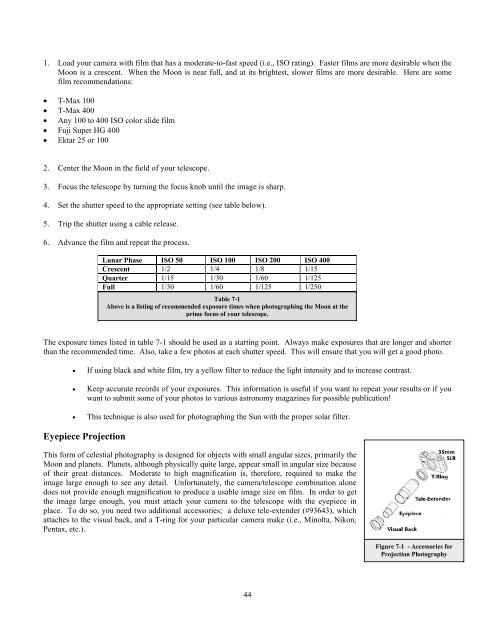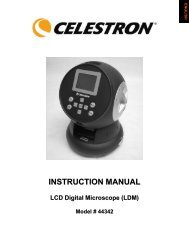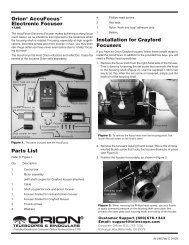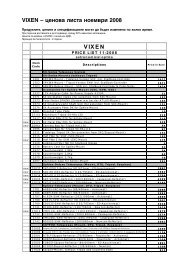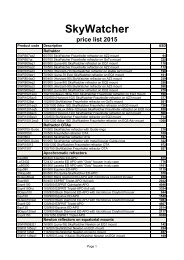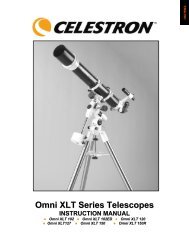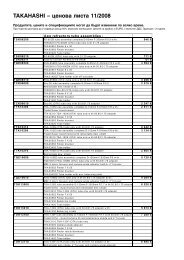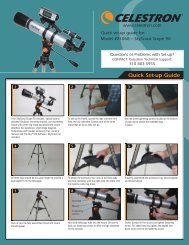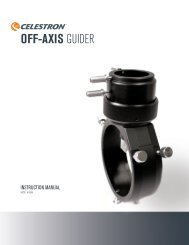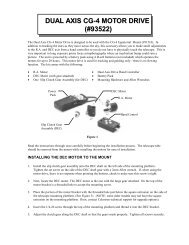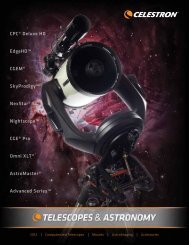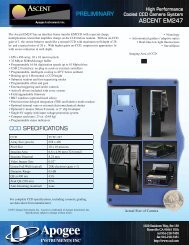Create successful ePaper yourself
Turn your PDF publications into a flip-book with our unique Google optimized e-Paper software.
1. Load your camera with film that has a moderate-to-fast speed (i.e., ISO rating). Faster films are more desirable when theMoon is a crescent. When the Moon is near full, and at its brightest, slower films are more desirable. Here are somefilm recommendations: T-Max 100 T-Max 400 Any 100 to 400 ISO color slide film Fuji Super HG 400 Ektar 25 or 1002. Center the Moon in the field of your telescope.3. Focus the telescope by turning the focus knob until the image is sharp.4. Set the shutter speed to the appropriate setting (see table below).5. Trip the shutter using a cable release.6. Advance the film and repeat the process.Lunar Phase ISO 50 ISO 100 ISO 200 ISO 400Crescent 1/2 1/4 1/8 1/15Quarter 1/15 1/30 1/60 1/125Full 1/30 1/60 1/125 1/250Table 7-1Above is a listing of recommended exposure times when photographing the Moon at theprime focus of your telescope.The exposure times listed in table 7-1 should be used as a starting point. Always make exposures that are longer and shorterthan the recommended time. Also, take a few photos at each shutter speed. This will ensure that you will get a good photo.If using black and white film, try a yellow filter to reduce the light intensity and to increase contrast.Keep accurate records of your exposures. This information is useful if you want to repeat your results or if youwant to submit some of your photos to various astronomy magazines for possible publication!This technique is also used for photographing the Sun with the proper solar filter.Eyepiece ProjectionThis form of celestial photography is designed for objects with small angular sizes, primarily theMoon and planets. Planets, although physically quite large, appear small in angular size becauseof their great distances. Moderate to high magnification is, therefore, required to make theimage large enough to see any detail. Unfortunately, the camera/telescope combination alonedoes not provide enough magnification to produce a usable image size on film. In order to getthe image large enough, you must attach your camera to the telescope with the eyepiece inplace. To do so, you need two additional accessories; a deluxe tele-extender (#93643), whichattaches to the visual back, and a T-ring for your particular camera make (i.e., Minolta, Nikon,Pentax, etc.).Figure 7-1 - Accessories forProjection Photography44


